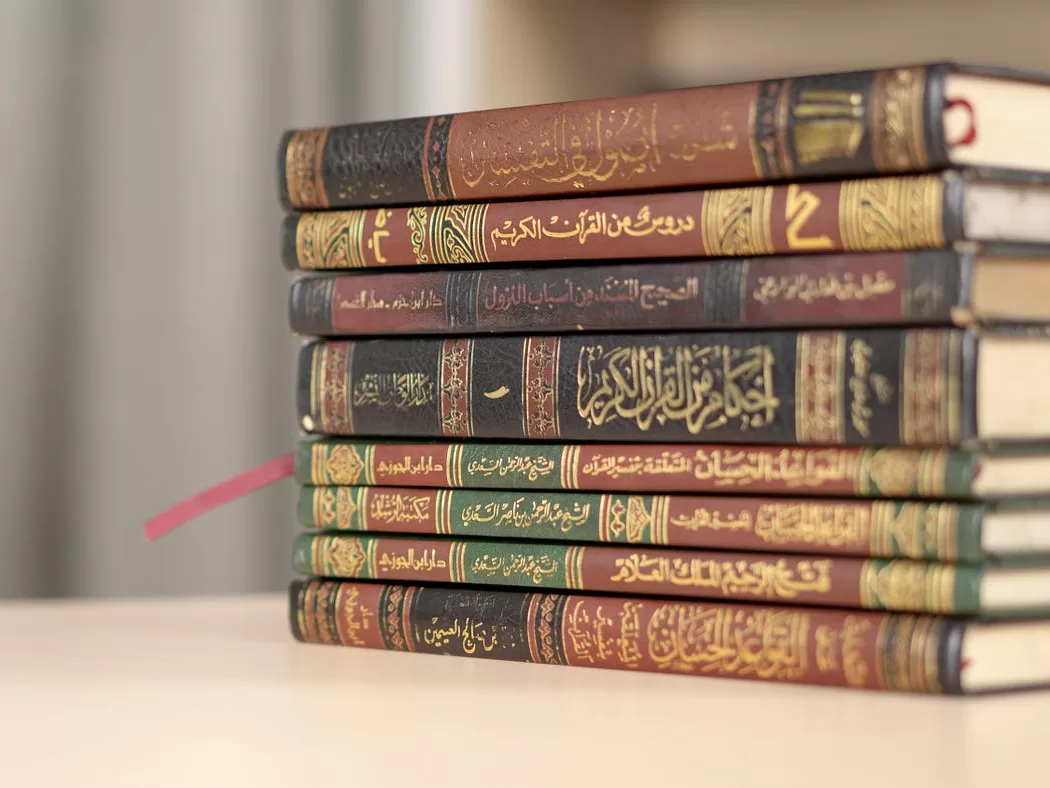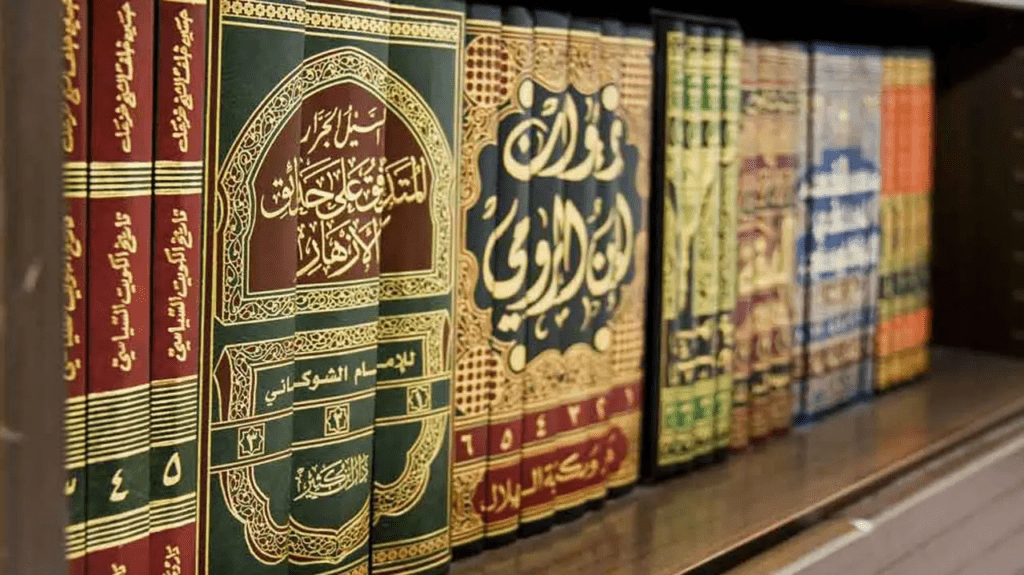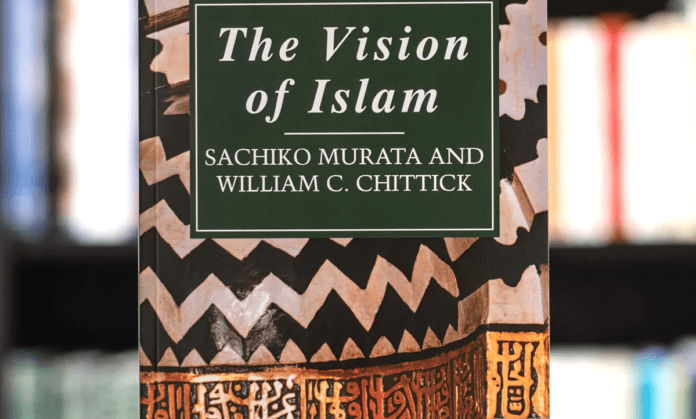The Unseen and the Visible
Everything the Koran says about the world can be considered a description of God’s acts but some statements are more general and some more specific. Some verses refer to many of the acts or all the acts, while others refer only to one or a few. Meditating upon the Koranic accounts and taking help from the Hadith and the prevailing worldview of their time, Muslim thinkers deduced that the acts can be divided into two basic categories. The Koran tells us in several verses that God is “Knower of the unseen and the visible.” Clearly, everything that exists is either seen by us or not seen by us.
Our knowledge extends as far as we can see, grasp, encompass, investigate, and analyze—and this leaves practically the whole universe unknown to us, since we have no way to see it and grasp it. In contrast to us, God knows everything, whether we see it or not.
But when the Koran speaks about the “unseen,” it does not seem to mean that which our eyes do not reach in practice, but rather that which our eyes do not reach in principle. Our eyes can only see material things. However, not only is the universe infinitely vast on the level of these material things, it is also infinitely vast on the immaterial level.
At the beginning of Sura 2, the Koran speaks about itself as guidance for those who are careful in their dealings with God and “who have faith in the unseen.” Thus, if we need to express the objects of faith in one word, we can say the “unseen.” Of course the scriptures are visible to us in their written form, but the meaning of the scriptures is unseen to us, which explains why people of all religions have spent an enormous amount of time and energy investigating the meaning of their scriptures, and why they continue to do so.

In short, Muslims have discerned two basic kinds of reality, the unseen and the visible, or the absent (ghayb) and the witnessed (shahada). The unseen can be divided into two basic categories: God and the angels. God is not seen by anyone except himself, whereas the angels are seen by other angels, by God, and by certain exceptional human beings, like prophets. Hence angels are unseen in relation to most human beings, but visible in relation to themselves and God.
The visible is the sensory world, which includes everything we see in fact or can see in principle. The visible can also be divided into two kinds: those things that all of us can see, like the external world, and those things that all of us do not share in seeing, like dreams and hallucinations. Dreams are visible to the dreamer, but not to anyone else in our world.
Of course, God sees our dreams, and so also do those angels whose business it is to see them (given that angels are divided into many kinds in keeping with their functions). There are also other kinds of beings that belong to the semi visible world, beings that for the most part cannot be seen, but on occasion show themselves. The jinn fit into this category (we will have more to say about them as we go along).
Another pair of Koranic terms that is frequently employed in discussions of the universe is heaven (or heavens) and earth. In discussing heaven, it is important not to confuse it with paradise. In Islam, paradise is always juxtaposed with hell, while heaven is always contrasted with earth. Paradise and hell pertain to the Return to God. They cannot be experienced in their fullness until after the Last Day. But heaven and earth refer to the situation of the cosmos from the time of this world’s creation until the Last Day. At the Last Day, heaven and earth will be transformed:
“Upon the day the earth shall be changed to other than the earth, and the heavens, and [people] shall go forth unto God, the One, the Intensely Severe” (14:48).
The Koran refers to seven heavens, and these are marked by the seven planets (a term which, in Greek and Arabic, means “wandering celestial body”). It is important not to think of these planets in terms of modern astronomy. Although the Muslims developed scientific astronomy to a high degree, the Koranic astronomy is an astronomy of signs. What we see with our naked eyes is used as a means to teach us about the unseen—God, the angels, and the Last Day. Hence, Koranic discussion of the heavens remains at the level of what people can observe by going out in their backyards on a dark night.
It is useful to keep in mind that the heavens were always full of meaning for people who lived with nature and that they could be seen clearly, given the lack of atmospheric pollution or interference from man-made light sources. In the modern world, scientific knowledge has removed us from the direct experience of nature. We can no longer see things as they present themselves to us. On the contrary, we see things as we were taught to see them in grammar school. Not only that, for the most part we have no interest in seeing things, because we think that the scientists—the specialists—know it all, and we cannot discover anything of significance ourselves. If we need to know something, we can look it up in a book. In any case, the fluttering electronic light of our television sets is much more dynamic and fascinating than the stars, which hardly move. (What did people do at night before television anyway?).

In ascending order, the seven planets are the moon, Mercury, Venus, the sun, Mars, Jupiter, and Saturn. Each planet swims in its own heaven. The tradition usually adds two more heavens to this list—the Footstool and the Throne. Sometimes these two are said to be identical with the sphere of the fixed stars and the starless sphere.
The Koran mentions the Footstool only once, in one of its most famous verses, which is often found inscribed in mosques or monuments: God—there is no god but He, the Living, the Self-subsistent. Slumber seizes Him not, neither sleep. To Him belongs all that is in the heavens and the earth. Who is there to intercede with Him save by His leave? He knows what is before them and what is behind them, but they encompass nothing of His knowledge save such as He wills. His Footstool embraces the heavens and the earth, and preserving them does not burden Him. He is the High, the Tremendous. (2:254)
Notice that the Koran is not talking about the cosmos but about God’s attributes. God knows all things, but people know only as much as God lets them know. Their knowledge, in other words, is measured out, while his knowledge is beyond measure. Then the verse mentions the universe in passing—the heavens and the earth. And it says that God’s Footstool encompasses them. The Footstool is obviously the place where God puts his “feet.” If God’s feet are resting beyond the universe, where could his “head” be? Not that God has head or feet, or at least in the sense that we have them, but the imagery is suggestive of relationships. What is lowest in God stands beyond what is highest in the universe. God has to stoop way down in order to interact with us, and we have to stretch high up in order to find God.
The Footstool is located below the Throne of God, where God the King sat down after he created the heavens and the earth. The Koran refers to the Throne in twenty-one verses, all of which suggest God’s kingship and power. However, perhaps to offset the majestic and severe connotations of kingship, the Koran associates only one divine name directly with the Throne, and that is Merciful. God is not similar to other kings, whose primary attribute is majesty and severity. On the contrary, God is a king whose gentleness predominates over his severity. Remember that the inscription on the Throne reads, “My mercy takes precedence over My wrath.” God’s rule brings nothing but good to his creatures. Hence the Koranic idea of the divine Throne combines attributes of majesty and beauty. This is highly appropriate for something that encompasses the whole universe, for the universe is ruled by both kinds of attributes. It should not be imagined that the Koran is talking about the solar system when it mentions the heavens. Although the heavens are marked by the planets, which are visible, the heavens themselves are unseen. A set of hadiths that bring this out clearly recount Muhammad’s journey to God, which is referred to in the Koran (17:1, 53:1-21, 81:19- 25). This journey is known as the mi`raj, which means literally “ladder.” The image here is not unconnected to the ladder that Jacob saw extending to heaven, with angels ascending and descending (Genesis 28:12). Muhammad was taken up the ladder to God, and then he came back down on the ladder to his people, to continue his mission to them.
Briefly, the accounts of the mi`raj tell us that Muhammad was woken up one night by Gabriel, who told him to come along. Gabriel mounted him on Buraq, a winged horse whose every stride was equal to its glance. In a few quick steps they reached the Temple at Jerusalem, where all the prophets from Adam down to Jesus were assembled. At the Temple, which the Koran calls the Further Mosque, Muhammad performed a salat, and all the prophets prayed behind him, with him as their imam.
Then Gabriel took Muhammad by the hand and they went up to the heaven of the moon. Gabriel knocked on the door, and a voice asked who was there. Having assured the voice that the two of them had been sent for, Gabriel was let in, Muhammad following. Waiting for them was Adam, and Gabriel performed the introductions. Adam said, “Welcome to a good son and a good prophet.” Then Gabriel and Muhammad continued the journey. In each of the remaining six heavens they met one or more of the prophets. After traveling through the heavens, they visited hell and then paradise. Some modern scholars have suggested that the accounts of the Prophet’s mi`raj provided the inspiration for Dante’s depiction of hell and paradise in the Divine Comedy. Having reached the outermost edge of paradise, located perhaps just below the Throne itself, Gabriel said that from this point on, Muhammad would have to go on alone to meet God, because, if Gabriel were to fly any farther, his wings would burn. Muhammad went to meet the ineffable light, and here the report turns silent. On the way back down, Muhammad rejoined Gabriel and then stopped in every heaven to say farewell to the prophets who reside there. This account should make clear that discussion of the heavens does not necessarily have much to do with the planets with which we are familiar. As some Muslim authorities have pointed out, this is a symbolic narrative that refers to various levels of existence and the fact that each level manifests different divine attributes. Each of the prophets that Muhammad meets represents part of the overall divine message, or a segment of the totality of the signs that God reveals in the scripture and in the cosmos.
No Muslim has ever imagined that Adam, Moses, Abraham, and other prophets are living on the planets, or at least not on the planets as we conceive of them in modern astronomy. Rather, the planets that wander through the sky are signs of God that fill existence with the light of his messages. They are signs that point to higher realms of existence that can be visited by those who go to meet God. As we will see later, all the faithful are taken up through these same heavens immediately after death, before settling down in the grave to wait for the day of resurrection.[1]
When heaven and earth are discussed, the basic issue is the nature of the relationships that are established among things of the created universe, or the hierarchy that is set up in the cosmos as a result of its subordination to God. We learn about God’s relationship to the cosmos both by contrasting his qualities with its qualities (tanzih) and by showing that the qualities of the two sides are in certain respects similar (tashbih).
In the same way, we learn about the relationships among God’s creatures by drawing consequences from the fact that heaven and earth reproduce in miniature the relationship between God and the cosmos. When Muslim thinkers look at heaven and earth in terms of the attributes of incomparability, they describe the two in opposite terms: high and low, bright and dark, strong and weak, active and passive, giving and receiving. When they stress the attributes of similarity, they illustrate that the qualities of heaven are also found in the earth, but in a diminished sense. God is Creator. “Is there any creator apart from God?” (35:3), the question is rhetorical, and no one doubts that the answer is “No.” The verse is meant to stress God’s incomparability. But another Koranic verse says, “God is the best of creators” (23:14). Hence we learn that other things share in the attribute of creativity.

Within the cosmos, heaven is the primary place where the attributes of creativity appear. In contrast, the earth’s qualities depend upon receptivity toward heaven. Moreover, heaven also depends upon earth, because without earth, heaven has no place to display its art. Heaven represents a concentrated, undifferentiated, and immaterial power, while earth represents a dispersed, differentiated, and material collection of signs, manifesting the invisible power of heaven. The basic Koranic symbol for the qualities of heaven is water, which is pure and undifferentiated. When heavenly water falls down, it yields a tremendous diversity of living things. As the Koran puts it, “Of water We fashioned every living thing” (21:30). Many Muslim thinkers maintain that this verse refers not only to animals and plants, but also to all created things, for everything in the heavens and the earth sings the praise of God, as the Koran says repeatedly. How can something sing without being alive?
It is He who sent down out of heaven water, and thereby We have brought forth the shoot of every plant. (6:99)
You see the earth blackened. Then, when We send down water upon it, it quivers, and swells, and puts forth herbs of every joyous kind (22:5)
We sent down from heaven pure water, so that We might give life to a dead land. (25:48)
If heavenly water is pure, it is also “one,” because of its undifferentiated nature. Only after being drunk by the earth can it give rise to diversity. “And in the earth are . . . gardens of vines, and fields sown, and palms in pairs, and palms single, watered with one water” (13:4). Earth, then, represents the place where heaven displays its properties, just as heaven and earth together (the cosmos) display the signs of God. Heaven is near to God, and earth is far away. Hence heaven alerts us to attributes of tashbih, while earth is dominated by attributes of tanzih. Nevertheless, earth also, in as much as it displays fruitfulness and bounty, is displaying God’s gentle and merciful qualities, so earth also has to be thought of in terms of tashbih. And heaven is not exempt from tanzih, because “Everything is perishing except the face of God” (28:88), and that includes heaven. Koranic teachings on how heaven and earth display God’s signs could be discussed endlessly, and all of it would be an expression of tawhid, but we will focus on a specific concept that is mentioned in the hadith of Gabriel the angels.
We said that the angels pertain more to tawhid than to prophecy or eschatology, though they have important roles to play in those domains as well. We now turn to explaining how the Koranic idea of angels helps shape the Islamic vision of God, the cosmos, and human beings.
To be continued ……
Book Reference:
Vision of Islam [2]
[1] To gain a visual idea of the symbolic nature of the mi`raj narrative. See, for example, M.-R. Séguy, The Miraculous Journey of Mahomet (New York: George Braziller, 1977),
[2] Islam of Vision: اردو ترجمہ مکمل کتاب
http://www.williamcchittick.com/wp-content/uploads/2019/06/ Chittick-and-Murata-Vision-of-Islam-Urdu-Translation-by-Muhammad-Suheyl-Umar.pdf \ https://salaamone.com/vision/





